EASA AIRWORTHINESS DIRECTIVE
EASA AIRWORTHINESS DIRECTIVE
EASA AIRWORTHINESS DIRECTIVE
You also want an ePaper? Increase the reach of your titles
YUMPU automatically turns print PDFs into web optimized ePapers that Google loves.
<strong>EASA</strong> AD No.: 2010-0165R1<br />
<strong>EASA</strong><br />
<strong>AIRWORTHINESS</strong> <strong>DIRECTIVE</strong><br />
AD No.: 2010-0165R1<br />
[Correction: 31 January 2011]<br />
Date: 27 January 2011<br />
Note: This Airworthiness Directive (AD) is issued by <strong>EASA</strong>, acting in accordance with<br />
Regulation (EC) No 216/2008 on behalf of the European Community, its Member States and<br />
of the European third countries that participate in the activities of <strong>EASA</strong> under Article 66 of<br />
that Regulation.<br />
This AD is issued in accordance with EC 1702/2003, Part 21A.3B. In accordance with EC 2042/2003 Annex I, Part M.A.301, the<br />
continuing airworthiness of an aircraft shall be ensured by accomplishing any applicable ADs. Consequently, no person may operate<br />
an aircraft to which an AD applies, except in accordance with the requirements of that AD, unless otherwise specified by the Agency<br />
[EC 2042/2003 Annex I, Part M.A.303] or agreed with the Authority of the State of Registry [EC 216/2008, Article 14(4) exemption].<br />
Type Approval Holder’s Name :<br />
AIRBUS<br />
Type/Model designation(s) :<br />
A318, A319, A320 and A321 aeroplanes<br />
TCDS Number :<br />
Foreign AD :<br />
Revision :<br />
<strong>EASA</strong>.A.064<br />
Not applicable<br />
This AD revises <strong>EASA</strong> AD 2010-0165 dated 05 August 2010, including the<br />
Correction dated 20 October 2010.<br />
ATA 35<br />
Oxygen System – Passenger Oxygen Masks – Identification /<br />
Modification / Replacement<br />
Manufacturer(s):<br />
Applicability:<br />
Reason:<br />
Airbus (formerly Airbus Industrie)<br />
Airbus A318-111, A318-112, A318-121, A318-122, A319-111, A319-112,<br />
A319-113, A319-114, A319-115, A319-131, A319-132, A319-133, A320-111,<br />
A320-211, A320-212, A320-214, A320-215, A320-216, A320-231, A320-232,<br />
A320-233, A321-111, A321-112, A321-131, A321-211, A321-212, A321-213,<br />
A321-231 and A321-232 aeroplane models, all manufacturer serial numbers.<br />
During maintenance, it was discovered that the in-line flow indicators at<br />
several oxygen-supply-lines of B/E Aerospace (formerly Puritan-Bennett)<br />
passenger oxygen masks Part Number (P/N) 174080-xx were found broken.<br />
Investigation revealed that in-line flow indicators P/N 118023-02, installed<br />
on, but potentially not limited to B/E Aerospace oxygen masks P/N 174080-<br />
XX, 174085-XX, 174095-XX, and 174098-XX, manufactured between 01<br />
January 2002 and 01 March 2006, are weaker and can fracture because of<br />
internal residual stresses caused by the flow indicator joint design and<br />
manufacturing processes. The affected oxygen masks P/N are known to be<br />
installed on, but not limited to A320 family aeroplanes.<br />
This condition, if not detected and corrected, could lead to further cases of<br />
fracturing and separation of the in-line flow indicators of the passenger<br />
oxygen masks, which could inhibit oxygen flow to the masks and<br />
consequently result in exposure of the passengers and cabin attendants to<br />
hypoxia following a depressurization event.<br />
For the reasons described above, this AD requires the identification of the<br />
affected masks and modification or replacement with a serviceable unit.<br />
<strong>EASA</strong> Form 110 Page 1/3
<strong>EASA</strong> AD No.: 2010-0165R1<br />
This AD was corrected to remove the specific revision number 90 for the<br />
A318/A319/A320/A321 Aircraft Maintenance Manual (AMM) from the “Ref.<br />
Publications” section; the AMM has a different revision status for each<br />
operator (customised).<br />
This AD is revised to specify that the identification of the affected passenger<br />
oxygen masks is also possible in accordance with aeroplane maintenance<br />
records data analysis.<br />
Effective Date: Revision 1: 10 February 2011<br />
Original issue: 19 August 2010<br />
Required Action(s)<br />
and Compliance<br />
Time(s):<br />
Required as indicated, unless accomplished previously :<br />
(1) Within the next 6 000 flight hours, or 4 500 flight cycles, or 20 months,<br />
whichever occurs first after 19 August 2010 [the effective date of the<br />
original issue of this AD], accomplish the following actions concurrently :<br />
(1.1) Identify the P/N of the passenger oxygen masks installed on<br />
aeroplane<br />
(1.2) Determine whether any are listed in table 1 below, and<br />
manufactured between 01 January 2002 and 01 March 2006.<br />
A review of aeroplane maintenance records is acceptable to<br />
make this determination, in lieu of the instructions of B/E<br />
Aerospace Service Bulletin (SB) 174080-35-02 Revision 01, if the<br />
P/N and manufacturing dates of the installed passenger oxygen<br />
masks can be conclusively identified from that review.<br />
Table 1<br />
B/E Aerospace Passenger Oygen Mask P/N<br />
174080-73 174085-96 174098-01<br />
174080-74 174085-97 174098-02<br />
174080-76 174085-98 174098-03<br />
174080-87 174095-1E 174098-04<br />
174080-96 174095-73 174098-05<br />
174080-97 174095-74 174098-06<br />
174080-98 174095-76<br />
174085-73 174095-87<br />
174085-74 174095-96<br />
174085-76 174095-97<br />
174085-87 174095-98<br />
(1.3) If any affected oxygen masks are installed, before next flight,<br />
modify the affected masks by replacing the in-line flow indicator<br />
P/N 118023-02 with an improved flow indicator P/N 118023-12, in<br />
accordance with the instructions of B/E Aerospace SB 174080-<br />
35-02 Revision 01, or replace the affected mask with a new or<br />
serviceable unit in accordance with the instructions of<br />
A318/A319/A320/A321 Aircraft Maintenance Manual (AMM)<br />
chapter 35-21-43.<br />
Note: For the purpose of the paragraph (1.3) of this AD, a serviceable unit is<br />
either a passenger mask with a P/N not listed in Table 1 of this AD, or a<br />
passenger mask with a P/N listed in Table 1 of this AD but not manufactured<br />
between 01 January 2002 and 01 March 2006.<br />
(2) After 19 August 2010 [the effective date of the original issue of this AD],<br />
do not install a B/E Aerospace passenger oxygen mask P/N listed in<br />
<strong>EASA</strong> Form 110 Page 2/3
<strong>EASA</strong> AD No.: 2010-0165R1<br />
table 1 of this AD, manufactured between 01 January 2002 and 01<br />
March 2006, on any aeroplane, unless the mask has been modified and<br />
re-identified in accordance with the instructions of B/E Aerospace SB<br />
174080-35-02 at original issue or Revision 01.<br />
Ref. Publications: A318/A319/A320/A321 AMM chapter 35-21-43.<br />
B/E Aerospace SB 174080-35-02 Revision 01 dated 13 April 2010.<br />
The use of later approved revisions of these documents is acceptable for<br />
compliance with the requirements of this AD.<br />
Remarks :<br />
1. If requested and appropriately substantiated, <strong>EASA</strong> can approve<br />
Alternative Methods of Compliance for this AD.<br />
2. The required actions and the risk allowance have granted the issuance<br />
of a Final AD with Request for Comments, postponing the public<br />
consultation process after publication.<br />
3. Enquiries regarding this AD should be referred to the Airworthiness<br />
Directives, Safety Management & Research Section, Certification<br />
Directorate, <strong>EASA</strong>. E-mail ADs@easa.europa.eu<br />
4. For any question concerning the technical content of the requirements in<br />
this AD, please contact: AIRBUS – Airworthiness Office – EAS; Fax +33<br />
5 61 93 44 51; E-mail: account.airworth-eas@airbus.com<br />
<strong>EASA</strong> Form 110 Page 3/3


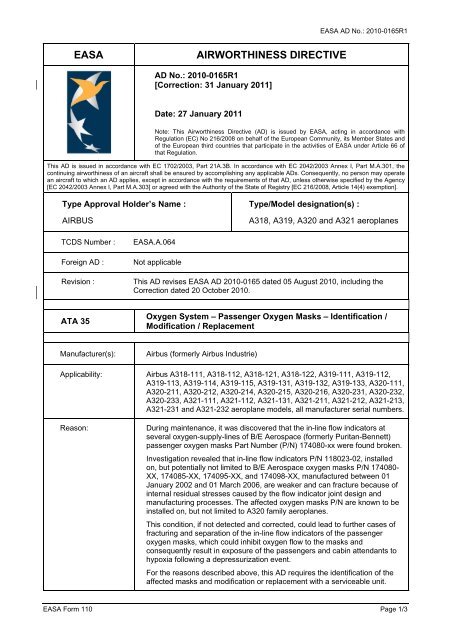
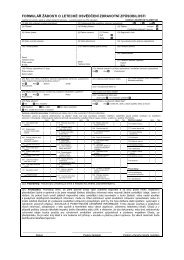
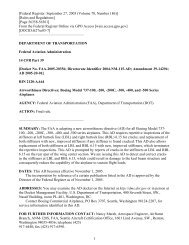
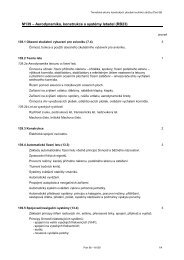
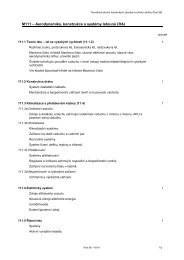
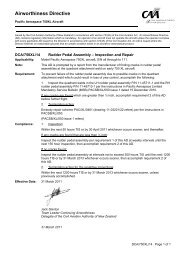
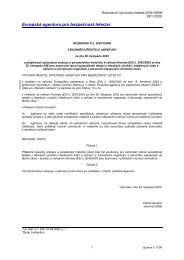
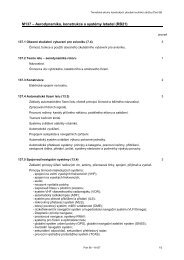
![AD 2010-0014 [PAD 09-006] Eurocopter ...](https://img.yumpu.com/50958012/1/184x260/ad-2010-0014-pad-09-006-eurocopter-.jpg?quality=85)
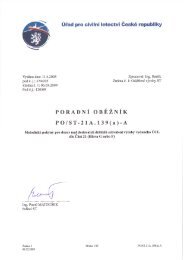
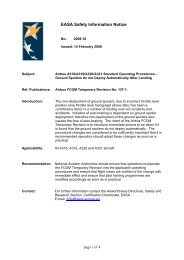
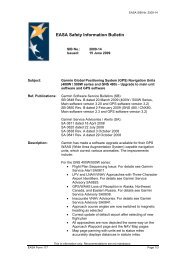
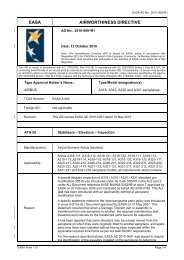
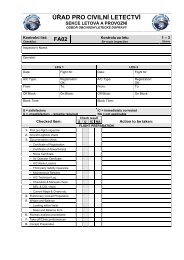
![1 [Federal Register: April 7, 2005 (Volume 70, Number 66)] [Rules ...](https://img.yumpu.com/49722490/1/190x245/1-federal-register-april-7-2005-volume-70-number-66-rules-.jpg?quality=85)
